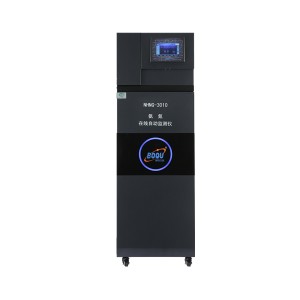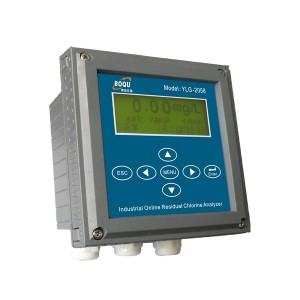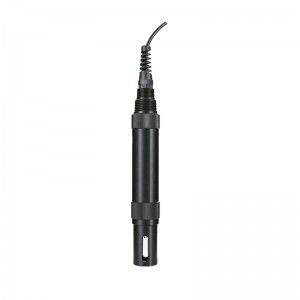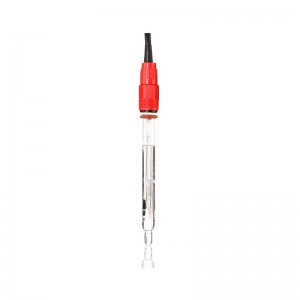Water quality analysis is a critical aspect of environmental monitoring and industrial processes. One essential parameter in this analysis is Total Suspended Solids (TSS), which refers to the concentration of solid particles present in a liquid medium. These solid particles can encompass a wide range of materials, including silt, clay, organic matter, and even microorganisms. The measurement of TSS plays a crucial role in understanding and maintaining water quality in various applications.
TSS measurement is significant for several reasons. Firstly, it provides valuable insights into the overall health of aquatic ecosystems. High TSS levels can indicate pollution or sedimentation, which can harm aquatic life. Secondly, in industrial settings, TSS measurement is vital for process control and regulatory compliance. It helps ensure that wastewater discharges meet environmental standards, preventing harm to natural water bodies. Additionally, TSS analysis is essential in research and development, helping scientists and engineers optimize processes and evaluate treatment efficiency.
BOQU TSS Meter — Working Principle of TSS Meters
TSS meter is a specialized instruments designed to quantify the concentration of suspended solids in a liquid sample accurately. They operate on the principle that when light passes through a liquid containing solid particles, some of the light is scattered or absorbed by these particles, and the extent of this scattering or absorption is directly proportional to the concentration of suspended solids.
To measure TSS, a TSS meter typically emits a beam of light through the liquid sample and measures the intensity of the light that emerges on the other side. By analyzing the changes in light intensity caused by the presence of suspended solids, the meter can calculate the TSS concentration. This measurement can be expressed in various units, such as milligrams per liter (mg/L) or parts per million (ppm).
BOQU TSS Meter — Types of TSS Meters
There are several types of TSS meters available in the market, each with its unique advantages and suitability for specific applications. Here are some common types:
1. Gravimetric TSS Meters: Gravimetric methods involve collecting a known volume of a liquid sample, filtering out the suspended solids, drying and weighing the solids, and then calculating the TSS concentration. While accurate, this method is time-consuming and labor-intensive, making it less practical for real-time monitoring.
2. Turbidimetric TSS Meters: Turbidimetric TSS meters measure the turbidity of a liquid sample, which is the cloudiness or haziness caused by suspended solids. They use a light source and a detector to quantify the degree of light scattering or absorption in the sample. Turbidimetric meters are often more suitable for continuous monitoring due to their real-time measurement capabilities.
3. Nephelometric TSS Meters: Nephelometric meters are a subset of turbidimetric meters that specifically measure the scattering of light at a 90-degree angle. This approach provides highly sensitive and precise measurements and is commonly used in environmental and industrial applications where accuracy is crucial.
Each type of TSS meter has its advantages and limitations. Gravimetric methods are accurate but time-consuming, while turbidimetric and nephelometric meters offer real-time monitoring capabilities but may require calibration to specific types of suspended solids. The choice of TSS meter depends on the specific requirements of the application and the level of accuracy needed.
One prominent manufacturer of TSS meters is Shanghai BOQU Instrument Co., Ltd. They offer a range of high-quality TSS meters tailored to various industrial and environmental needs, ensuring accurate and reliable measurements to maintain water quality and compliance with regulatory standards.
BOQU TSS Meter — Components of a TSS Meter
1. TSS Sensors: At the heart of a TSS meter is the turbidity or TSS sensor. These sensors emit light, typically in the form of infrared or visible light, into the liquid sample. They also contain optical detectors that measure the intensity of light scattered or absorbed by solid particles present in the sample. The sensor’s design and technology significantly impact the meter’s accuracy and sensitivity.
2. Light Sources: TSS meters are equipped with powerful light sources that illuminate the sample. Common light sources include LEDs (Light Emitting Diodes) or tungsten lamps. The choice of light source depends on the required wavelength and the nature of the suspended solids being measured.
3. Detectors: As mentioned earlier, detectors in TSS meters play a crucial role in capturing the light scattered or absorbed by the suspended particles. Photodiodes or photodetectors are commonly used to convert optical signals into electrical signals, which are then processed for TSS calculations.
4. Data Display Interfaces: TSS meters are equipped with user-friendly interfaces that display real-time data. Modern TSS meters often include digital screens or software interfaces that provide users with easy access to measurements, calibration settings, and data logging capabilities.
BOQU TSS Meter — Calibration and Standardization
Calibration is paramount in TSS measurements as it ensures the accuracy and reliability of the data collected. TSS meters are typically calibrated using standard reference materials. The importance of calibration lies in minimizing instrument drift and ensuring that measurements remain consistent over time.
1. Standard Reference Materials: Calibration is achieved by comparing the TSS meter’s readings with known concentrations of solid particles in standardized reference materials. These materials are carefully prepared to have precise TSS values. By adjusting the meter’s settings to match the reference material, users can ensure that the instrument provides accurate measurements in their specific application.
BOQU TSS Meter — Sample Preparation
Accurate TSS measurements also hinge on proper sample preparation, which involves several crucial steps:
1. Filtration: Prior to analysis, samples may need to be filtered to remove large particles or debris that could interfere with the TSS measurement. This step ensures that the meter focuses on the suspended solids of interest, rather than extraneous matter.
2. Sample Preservation: In some cases, it is essential to preserve the sample to maintain its integrity until analysis. Chemical preservatives, refrigeration, or freezing may be employed to prevent microbial growth or particle settling.
Conclusion
TSS measurement is a vital component of water quality analysis with implications for environmental protection, industrial processes, and research and development. Understanding the working principles and type of TSS meter available in the market is crucial for selecting the right instrument for the job. With the right TSS meter, industries and environmentalists can continue to protect our precious water resources effectively.
Post time: Sep-22-2023













